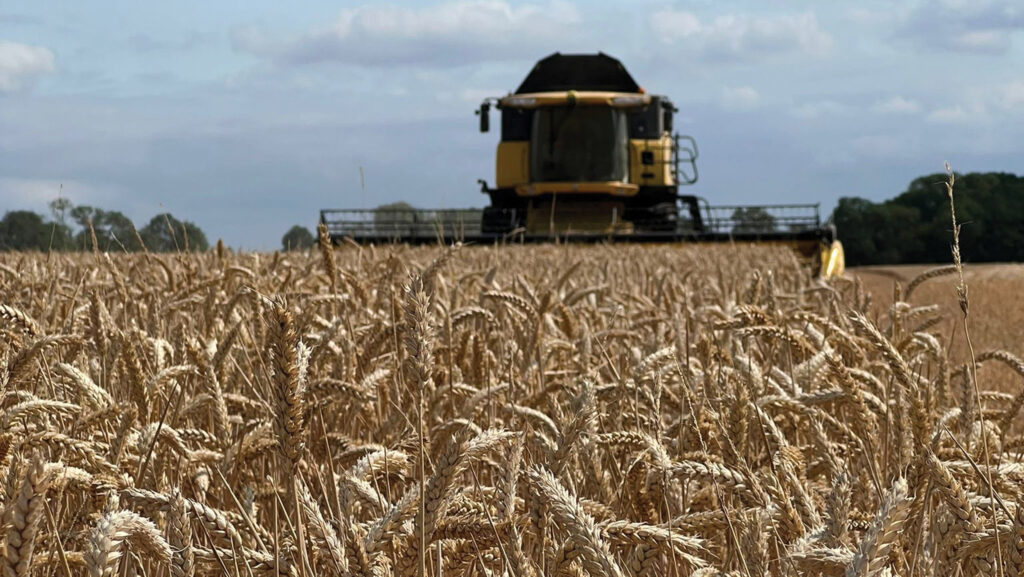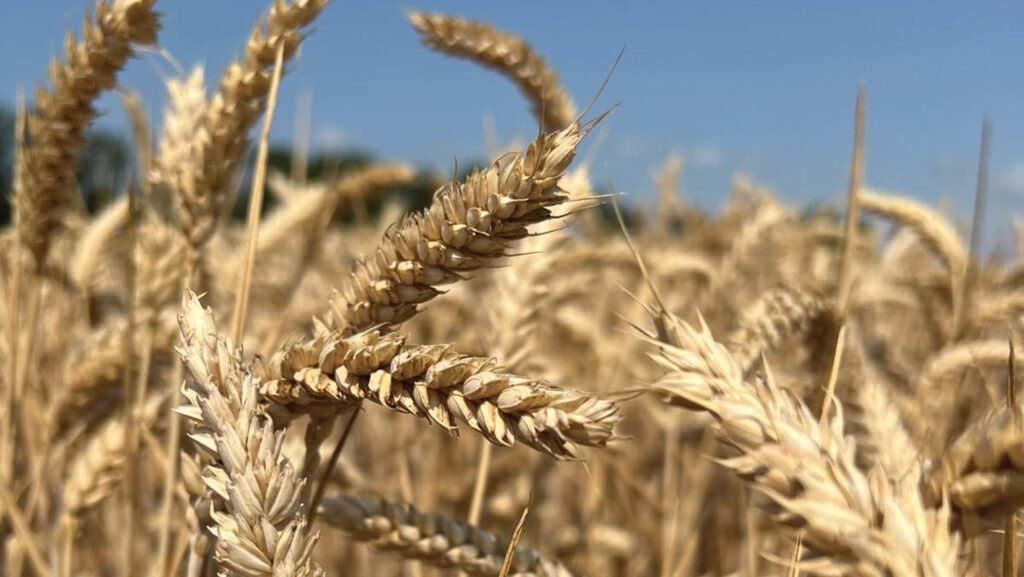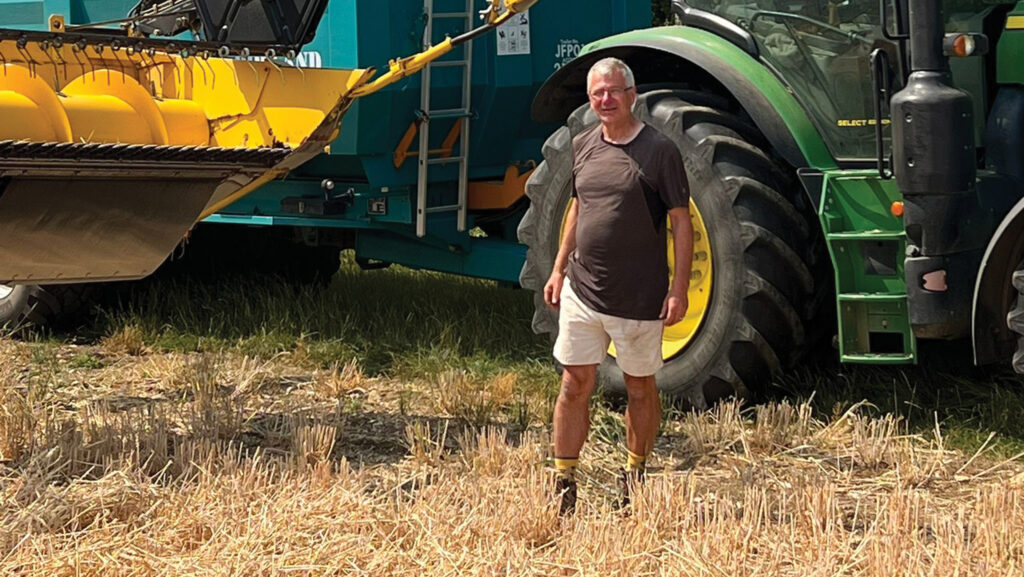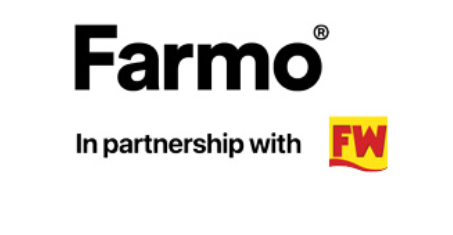Yields down but quality firm in unexpected wheat harvest
 © Jenny Jefferies
© Jenny Jefferies It was an unexpected early start to winter wheat harvest for Cambridgeshire farmer John Jefferies, who started cutting his milling crop on 12 July.
“Yields are down on what we would hope at 7.5-8t/ha, but given the dry season, I am more than happy. The quality of the grain sample looks beautiful,” says John.
“I certainly was not expecting to start harvest this early. It’s a good two weeks ahead of usual. We normally cut at the end of July early August,” he adds.
See also: Harvest fire risk advice issued as fields stand tinder dry
Stunted growth, but good quality
John predicts the hot spring days and cold nights at Fullers Hill farm, near St Neots, stunted crop growth and reduced rooting potential. This ultimately restricted nutrient uptake by the plants.
“With the dry spring, came the cold easterly wind which meant we had a few frosty nights, which added to the issue,” he says.
Then came the early start to summer with hot temperatures, plenty of sunshine but a lack of rain. “This cost the crop tillers and prompted it to give up,” notes John.
Crops certainly received their sunshine quota for the season and this was reflected in the quality of the grain.

© Jenny Jefferies
“The grain is a beautiful looking sample, with specific weight of 80kg/hl. I think that once the wheat has had enough sunlight, it starts to ripen and that’s what brought on the early senescence and the early harvest this season,” he says.
The New Holland CX 80 90 combine has been starting cutting at 8am, as a result of the hot, dry conditions to try and get some dampness into the grain.
Milling premium
John was initially worried that the crop of Group 1 Vibe milling wheat would not meet the millers 12% protein requirements as the final fertiliser dose on the wheat was missed.
“I didn’t want to risk scorching the crop in the dry conditions so the crop didn’t receive it’s final nitrogen application. Fortunately, the sample we sent off has come back at 12% and a Hagberg in excess of 300, so I am very pleased,” says John.

John Jefferies © Jenny Jefferies
A total of 40ha of Vibe winter wheat has been cut so far, with Costello winter wheat to follow.
Although it is looking likely the oilseed rape and spring barley will be ready for the combine next, as the Costello needs to ripen further.
Initial oilseed rape yields have come in with highs just over 4t/ha. “The pigeon-damaged corners will undoubtedly bring the field average down,” notes John.
Pleasing oats, disappointing barley
Oats have so far been the standout crop of this year’s harvest, yielding 6.5t/ha at 11% moisture, with a pleasing margin to show for it.
“I am really pleased with the Mascani milling oats. They yielded a heavy sample, and were very cost effective to grow. They received no fungicides or plant growth regulators.
Winter barley yields were disappointing, he continues, with yields of 5.8t/ha as a result of the drought conditions.
The crop also suffered with ergot contamination, which will bring an additional expense in cleaning and sorting of the grain.
Consequently, John is considering dropping winter barley from the rotation in favour of the winter oats.
“The oats give a better return and offer a later drilling window to achieve better blackgrass control,” says John.
A conservation agriculture system has been in place for the past 10 years at Fullers Hill farm, integrating cover cropping and direct drilling wherever possible.
John says crops have better withstood the lack of rain this season, as a result of improved soil organic matter levels retaining moisture in the soil profile.

